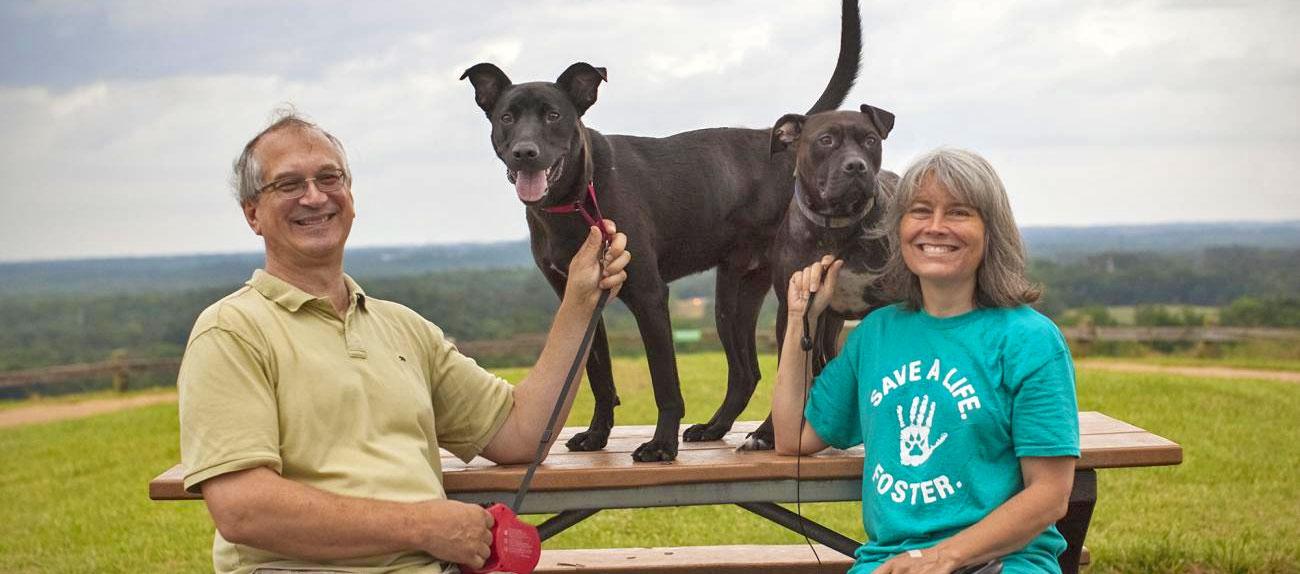
Introducing A New Pet to Your Home
This page has information on helping your new pet settle in and meet new family members, furry and otherwise: How to Introduce a New Pet to Your Home
Post Surgical Care Instructions for Pets Spayed or Neutered at WCAC
If your new pet was recently spayed or neutered, you should have received Post Surgical Care Instructions.
Recovery typically takes 10-14 days, though your pet may be feeling more like themselves within 2-3 days. For younger animals, they may wake up after anesthesia and act like nothing happened!
Do not bathe your pet or clean their incision or tattoo, and do not allow them or other pets to lick or chew on the incision or tattoo. If your pet is licking or chewing their incision or tattoo, you will need to enlist the aid of a no-lick device. If you do not, your pet may lick through the external surgical glue and cause infection, or even rip out their internal sutures and cause injury. Both will require veterinary care at your cost. The best care is prevention!
Do not encourage too much activity. For cats, this may mean laying tall cat trees on their side and saving wand toys and laser pointers for after two weeks. For dogs, this means staying on-leash when outside, even inside a fenced-in yard. Short walks and playtime are totally fine, just nothing too strenuous. Too much activity can cause bruising and swelling around the surgical site, which can lead to discomfort or even injury.
STOP LICKING THE INCISION!
Many pets recover from spay or neuter without incidence. Typically, younger animals have less issues with surgery recovery, due in part to their faster healing time but also their energy level- they’re too busy to worry about their incision.
Of the animals that WCAC adopts out, adult male dogs are at the highest risk for licking their incision, followed by adult female dogs. Cats in general and puppies don’t need intervention as often, but we recommend being prepared. There is nothing worse than staying up all night trying to prevent your new pet from opening up their incision. Just keep the receipt and return it if you don’t need it, or keep it for future use!
Tools for Safe Surgery Recovery
The Cone
The go-to for many, this tried-and-true method can be psychologically uncomfortable but is affordable and effective.
Basic Cone
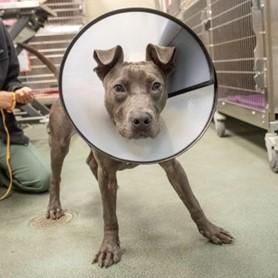
Basic aka the Lamp Shade, aka the Cone of Shame. (Note: There is no shame in keeping your pet safe! But there may be a little shame in messing with your giblets.) This cone is plastic, may be adjustable, and is secured with a collar or tie. These can be purchased at most vet offices and pet stores.
Comfy Cone
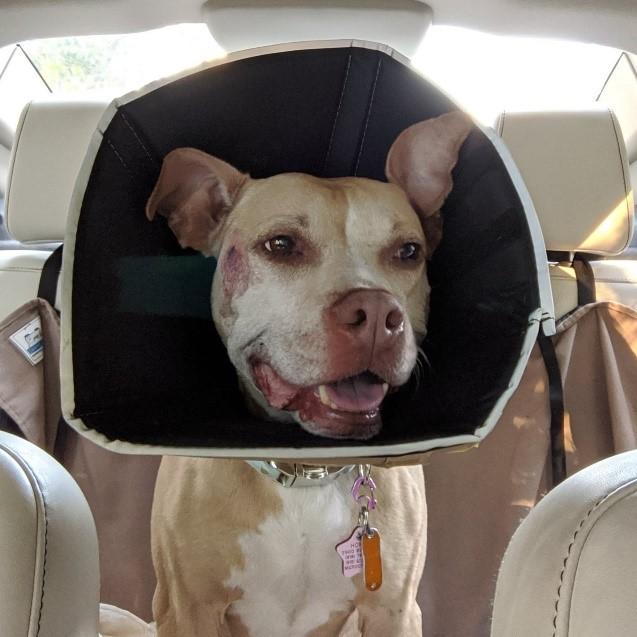
The Comfy Cone. Foam-backed and fabric-covered, it’s softer, quieter, and less scary than the basic cone. It is adjustable and customizable. It can be purchased online and at specialty pet stores.
Soft Cones
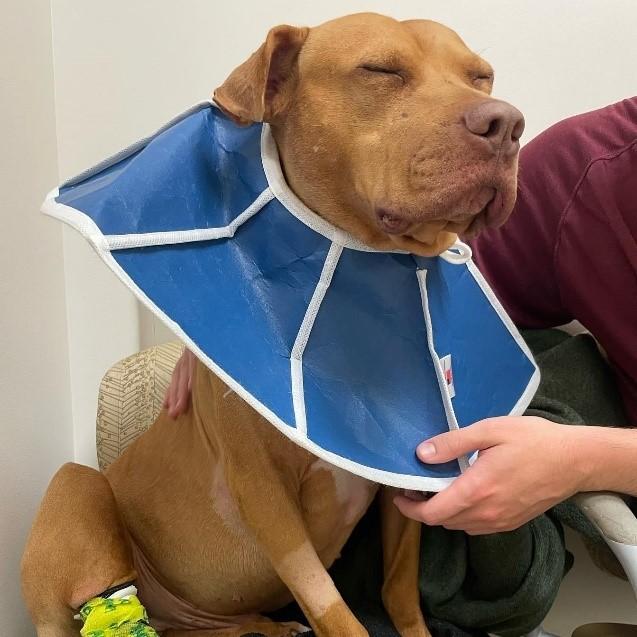
Fabric Cones. These cones are fabric and lightweight. Examples: ElizaSoft Recovery Collars (pictured) and Kong EZ Soft Collar (for cats and small dogs).
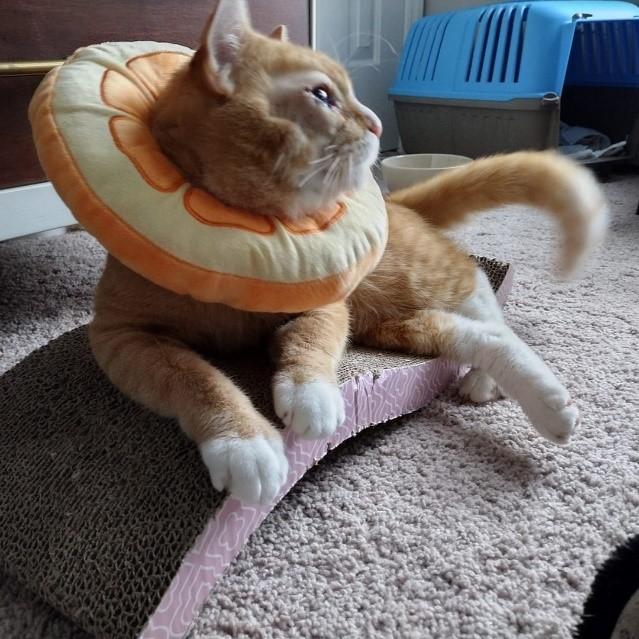
Plush Cones. These come in many shapes and designs. They may not be as durable or secure, but they are definitely the cutest!
Properly Fitting the Cone
- Some pet stores will have the ability to help you fit a cone on your new pet.
- The most common issue is that the cone is too small. First, choose a size appropriate fit the size of the pet's neck. You should be able to fit several of your fingers between the cone and the animal's neck.
- Many people will test the fit by pulling the collar up towards the ears. Instead, you need to push the collar back toward the animal's shoulders. When in this position, extend their nose forward. If the nose goes beyond the sides of the collar, it is too small.
The Neck Brace (Bite Not)
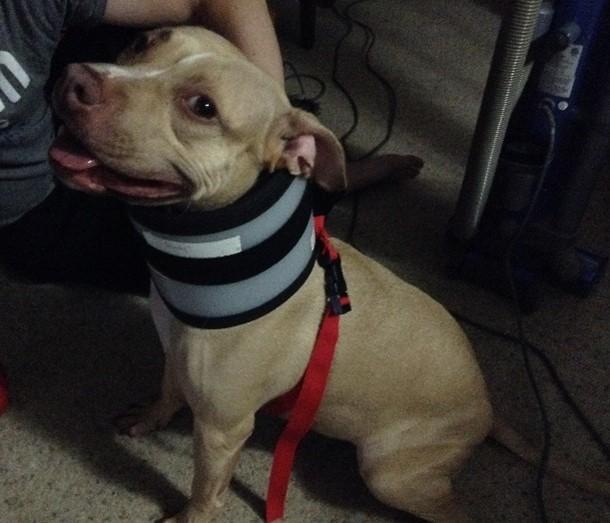
These collars allow more freedom of motion and vision while still restricting access to the incision area. Examples: BiteNot and Bite Not Collar
The Inflatable
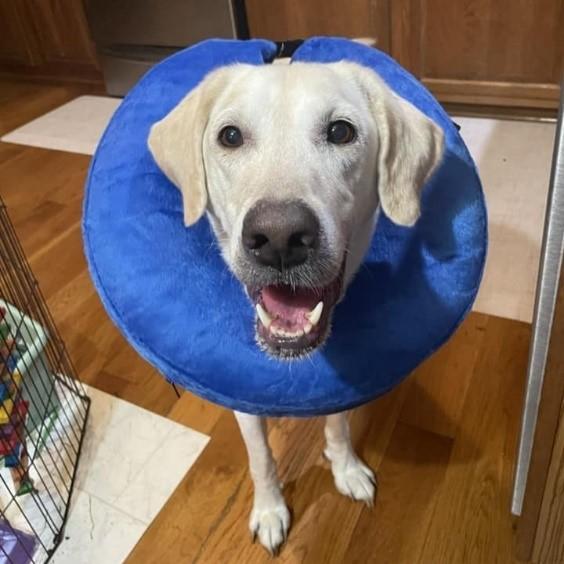
aka The Doughnut. These are in between the plush cone and the bite not. They restrict some movement of the neck without obstructing as much as the full cone. These can be purchased online and in pet stores. Examples: ZenCollar and E-Collar Cloud
The Suit
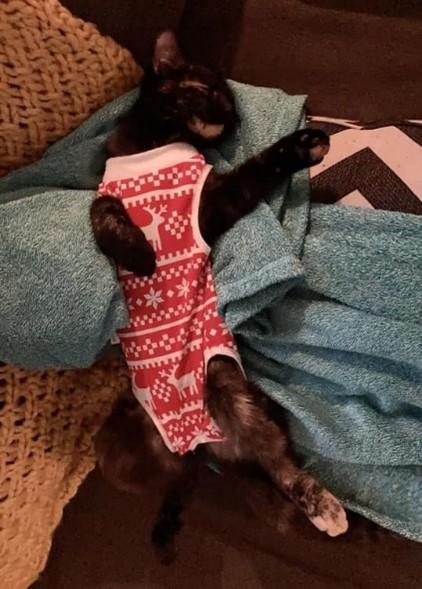
Surgery recovery suits act as a layer of protection from licking and chewing. Very determined pets may still be able to do damage by licking to the point of dampening or chewing through the fabric. These are great for cats and kittens, and you can even make one yourself! Examples: Suitical, 8 Amazing DIY Cat Onesies You Can Make Today (With Pictures) – Catster
Vaccinations & Preventative Care
The Basics for Cats and Dogs
Adopters are responsible for future care, but cats and dogs adopted from WCAC have already received core vaccinations and basic parasite prevention and treatment. New owners are given a Medical History that shows treatments given and estimated due dates, as well as an explanation sheet. We recommend continuing parasite prevention and other vaccines after adoption. Speak with your veterinarian regarding your pet's health and lifestyle to determine what future vaccinations are needed and when. Your new pet will need an exam with your veterinarian within three weeks of adoption. At that time, you can discuss preventative health care and maintenance.
Rabies
The rabies vaccination is required by law. If a dog or cat is under 4 months old at the time of adoption, the adopter is given a reminder card and can bring the pet back when old enough to receive the rabies vaccination. There is no additional cost for this first vaccine.
Feline FIV/FeLV Test
If not already tested, it is recommended that cats over 4 months old be tested for FIV (Feline Immunodeficiency Virus) and FeLV (Feline Leukemia). While not common, these diseases effect the immune system and can impact future health and care. This is especially important multi-cat families, as FeLV is more easily contagious.
Canine Heartworm Prevention
Dogs that are at least 6 months old are tested for heartworms, and this test should be repeated in six months. If adopted before 6 months, your vet will need to test your new puppy. All dogs and puppies are given monthly heartworm prevention, which will need to be continued life-long. Heartworm disease is fatal and very common in the south, where disease-carrying mosquitos are rampant.
Dental Health for Dogs and Cats
Dental disease is common in older animals and poor nutrition can cause even younger animals to have issues. The most effective treatment is routine teeth brushing and veterinary dental cleanings are needed for most pets at some point in their life.
Look for the VOHC (Veterinary Oral Health Council) seal on dental care products proven to improve dental health.
Upper Respiratory Infection in Cats and Dogs
Many have been exposed to or been treated for upper respiratory infection (URI). Symptoms can include sneezing, mucus from the eyes/nose, cough (dogs) and oral lesions (cats). If symptoms are noted by staff while the animal is still at WCAC, medications may be sent home. We cannot give medication to a pet after adoption. If your new pet exhibits URI symptoms after arriving home, follow up with your veterinarian.
Small Animal Care
Small animals, such as rabbits, guinea pigs, rats, and hamsters, do not receive the same vaccines and preventative care as dogs and cats, but it is just as important that they receive basic veterinary care. It is recommended that all pets are taken to a veterinarian for a wellness visit, both to check out their general health and also create a relationship with a clinic in the event of an emergency.
Additionally, it is recommended that rabbits be spayed or neutered, both for hormone-triggered aggression and the high likelihood of reproductive cancers.
What We Feed at WCAC
Hill's Science Diet
We primarily feed Hill’s Science Diet through their Food, Shelter & Love program. All dogs and cats are given dry food; underweight animals and those under 6 months old may also be given canned food. In addition to Hill’s Science Diet, pets that need extra care are also given canned food donated by our community.
Adult dogs and puppies 6 months and older eat Chicken & Barley Dry Food. Puppies under 6 months eat Chicken & Brown Rice Dry Food. Adult cats and kitten 6 months and older eat Chicken Dry Food. Kittens under 6 months old eat Chicken Dry Food.
A small sample of dry food goes home with dogs and cats at adoption, if available.
Microchips
Permanent identification
A microchip is about the size of a grain of rice and is implanted via a quick injection with a needle under the skin, typically between the shoulder blades. Once under the skin, the microchip can be read with a scanner and shows the microchip’s number, like a barcode or UPC. That number is connected to a database which has the owner’s name and contact information. It is not a GPS or tracking device, but a permanent identification tag.
All cats and dogs not already microchipped are implanted with a Home Again microchip. If you do not receive a confirmation of registration email from Home Again within 24 hours of adoption, call or go to their webpage to make sure your new pet’s microchip has been updated.
Petco Love Lost
Pet database
At adoption, your pet’s basic information and photo may be added to Petco Love Lost’s extensive database of pets. In the event that your pet ever goes missing, you can create an alert on their website and their AI will search all found pet photos for potential matches. In addition to the microchip, this is an excellent tool in cases of emergency.


